ROOM: The Space Journal is one of the leading magazines on space exploration, technology and industry. At ROOM, we share a common objective – advancement of peaceful space exploration for the benefit of humankind, all while bringing you fascinating articles on a variety of current topics. Our authors include analysts and industry leaders from all over the world, which lets us bring you the newest and detailed information about kepler exoplanet habitable.
 May 2018
PLATO the habitable zone explorer
May 2018
PLATO the habitable zone explorer
... Oscillations of stars, otherwise known as PLATO, and its main objective is to search for Earth-like planets in the habitable zone of stars like the Sun. The existence of other worlds out there in the cosmos has long... projects, including the SuperWASP, HATnet, and Kelt surveys, as well as the space missions CoRoT, Kepler, and K2. NASA’s upcoming Transiting Exoplanet Survey Satellite (TESS) due for launch this year, will also search for transits...
 April 2019
Scanning the skies for exoplanets
April 2019
Scanning the skies for exoplanets
... orbit their host stars in 13 days or less; these are considered short orbital period exoplanets. Conversely, Kepler was adept at finding exoplanets with orbital periods from 10 days up to a few hundred days, a feature that proved invaluable time ... at the top of the list,” said Vanderspek. “Because M stars are cooler than the Sun, the habitable zone is closer to the star, where the orbital periods are shorter and TESS is well-positioned to detect...
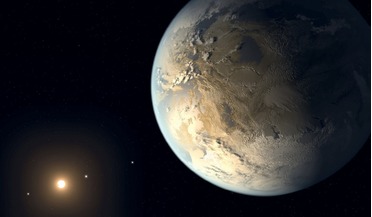 August 2018
Exoplanet census promises radical discoveries
August 2018
Exoplanet census promises radical discoveries
...planet or star in systems with more than one host star. The combination of the WFIRST exoplanet microlensing survey and Kepler’s transit survey will provide a complete statistical census of planets at all separations. This is the...starshade. To properly control diffraction and achieve a small enough angle to see Earth-like planets in the habitable zone around nearby stars, the starshade must be tens of metres in diameter and flown tens of thousands...
 19 November 2018
Kepler officially retires after receiving final "goodnight" commands
19 November 2018
Kepler officially retires after receiving final "goodnight" commands
... night sky are likely to be surrounded by small, possibly rocky, planets similar in size to Earth, orbiting within the habitable zone of their parent stars. This ‘Goldilocks zone’ as it has become known, is within a region where liquid water... come closer than a million miles to our planet. The baton will now be handed onto the Transiting Exoplanet Survey Satellite (TESS) to pick up where Kepler left off.
 November 2018
How many people does it take to colonise an exoplanet?
November 2018
How many people does it take to colonise an exoplanet?
... Located at 4.2 light years (40,000 billion km), Proxima Centauri b is almost an ideal destination - as far as exoplanets go. But while this distance may be small by astronomical standards, it remains utterly vast on the human scale. The...not a strict, definitive number for colonisation projects. Artist’s concept of the surface of TRAPPIST-1f, an exoplanet about 40 light years from Earth. Cows in space? Sending a ship laden with frozen embryos ...
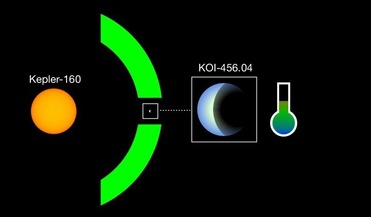 05 June 2020
Exciting exoplanet find around sun-like star
05 June 2020
Exciting exoplanet find around sun-like star
... is not new. It was discovered around ten years ago, followed by the confirmation of two exoplanets, called Kepler-160b and Kepler-160c, four years later. Both of these planets though are substantially bigger than Earth and in ... of an orbiting planet. “KOI-456.01 is relatively large compared to many other planets that are considered potentially habitable. But it’s the combination of this less-than-double the size of the Earth planet and its solar...
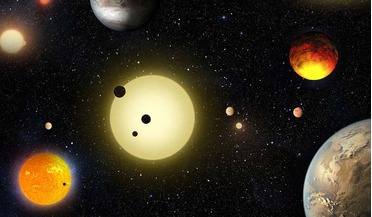 11 May 2016
Kepler scientists announce a major increase in confirmed exoplanet numbers
11 May 2016
Kepler scientists announce a major increase in confirmed exoplanet numbers
... 24hrs a day, 7 days a week, 365 days a year looking for the tell-tale sign of a would be exoplanet. The technique Kepler uses is known as the transit method and it works by measuring the dip in star light as a planet passes... diagram for reference. The light and dark green shaded regions indicate the conservative and optimistic habitable zone. Credits: NASA Ames/N. Batalha and W. Stenzel Despite announcing the single largest finding of planets to ...
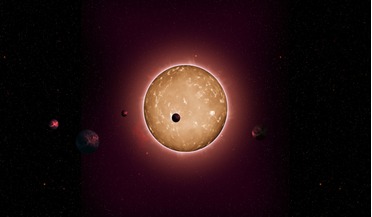 24 November 2021
Astronomers discover more than 350 possible new exoplanets
24 November 2021
Astronomers discover more than 350 possible new exoplanets
...planets in or near the habitable zone of Sun-like stars, to searching around smaller, dimmer red dwarf stars instead. Dubbed K2, this “Second Light" mission lasted as long as Kepler’s first exoplanet hunt and bumped its ...of data about once per month – is still being examined for signs of potential habitable exoplanets. However, because of the problems Kepler experienced, scientists have not been able to use the same automated processes used to ...
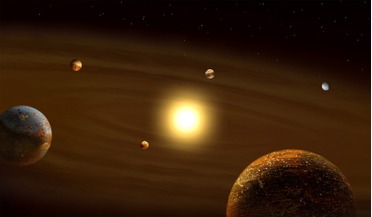 27 July 2019
Hundreds of new planet candidates detected by Kepler
27 July 2019
Hundreds of new planet candidates detected by Kepler
...planets around main sequence stars like our sun as it was designed to, it was proposed that Kepler search for habitable worlds around smaller, dimmer red dwarfs in a different direction to which it had been looking ...title – K2 – and 15 months after being reassigned to its new stellar target, Kepler had racked up its 1,000th confirmed exoplanet discovery. Kepler’s K2 mission comprised of 19 ‘campaigns,’ lasting around 80 days each. These new ...